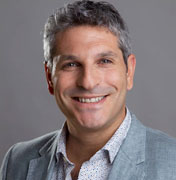The BFG
 Dreams are crucial to the world of the BFG (Big Friendly Giant). ‘Dreams is quick on the outside, long on the inside,’ says the eponymous character as he goes about catching them and putting them in jars.
Dreams are crucial to the world of the BFG (Big Friendly Giant). ‘Dreams is quick on the outside, long on the inside,’ says the eponymous character as he goes about catching them and putting them in jars. You’d imagine, then, that Steven Spielberg and Roald Dahl would make a dream combination: two of the greatest storytellers, both of whom have captivated children with their art for decades by tapping into the darkest dreams and fears of childhood.
Indeed, there is so much – too much? – to admire in Spielberg’s latest film, you spend a lot of the time simply gawping up at the screen, much like the young actress (Ruby Barnhill) who plays Sophie, the orphan plucked from her dormitory and whisked off to Giant Country. Splendid as Ruby is, you do feel for this tiny performer having to act up to one of those disembodied green screens – her eyes are never quite in the right place.
Technology marches ever forward with giant steps these days. Each film I see is another stage forward in wonderment. Only a couple of months ago I was agog at The Jungle Book and now Spielberg’s advances in the world of motion capture are a marvel, so much better than when he first tried them in his Tintin adaptation.
He’s helped, of course, by the utter brilliance of Mark Rylance in the lead role. I think the previous holder of the best mo-cap performance ever was Andy Serkis as Gollum in The Lord Of The Rings series, but Rylance takes it to another level here – through all the effects gubbins, you can still see the actor himself working in the giant expressions and slumping body movements and particularly in the baleful eyes, which twinkle and break along with that mellifluous, agreeable voice.
For all the wondrous wonderment and amazing amazingness on screen, it’s still the Dahl prose that most captures the heart, adapted by the late E.T. screenwriter Melissa Mathison. Rylance delights in the delivery of words including snozzcumbers, hippo-dumplings, vegeterribles – in short, the art of ‘saying things a little squiggly’.
Around him and Sophie the film conjures up a strangely timeless world, an olde England of cobbled streets, red buses and orphans. And in the bullied, gentle giant, there’s something of Rylance’s celebrated character Johnny ‘Rooster’ Byron from the hit stage play Jerusalem – a certain wild gypsy abandon that connects directly with the ancient earth and the spirit world.
However, this isn’t perfect Spielberg. For all his gifts – and Dahl’s – there’s something missing and certain elements don’t quite work. I didn’t like the other giants who treat the BFG so cruelly – their characterisation falls flat and a bagginess creeps into the narrative.
And there’s the visit to the Queen, with ‘her Majesters’ daintily played by Penelope Wilton. Here, Rylance is great, gobbling down pancakes and crashing into the chandeliers but, what with the whizpoppin’ corgis and everything, it probably goes a joke too far.
At 117 minutes, this is surely a tad too long for many children. By the climax, I just felt things slipping away and out of control. The film loses focus, distracting from the essential tale of kinship between Sophie and the BFG – Elliott and E.T. always remained the emotional core of that movie and that tearful, heartfelt connection of which classic cinema is made isn’t quite there this time round.
Nevertheless, The BFG still makes the most refreshing change. Compared to the slick-scripted, hermetically-sealed world of a Pixar animation or one of those other studio CGIs where all the squirrels and alley cats talk like Bronx taxi drivers, the mix of Spielberg, Dahl, Rylance and little Ruby goes down like an ice-cold bottle of frobscottle on a hot summer’s day.


